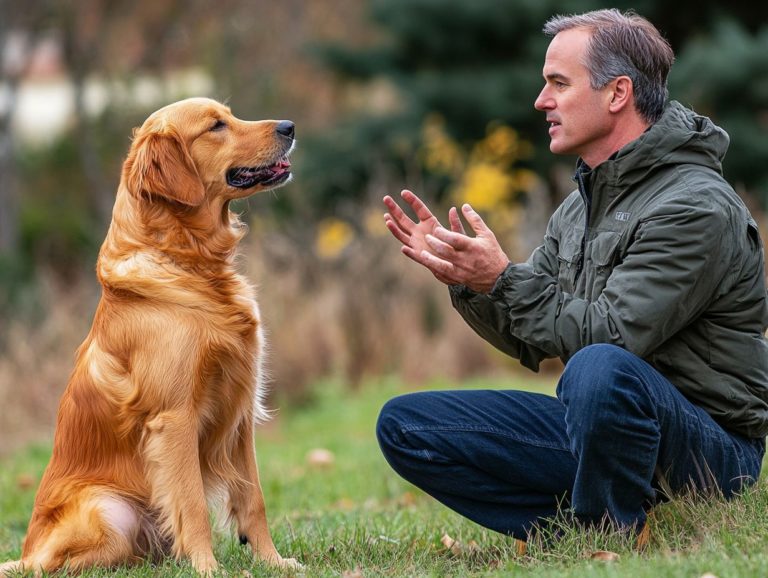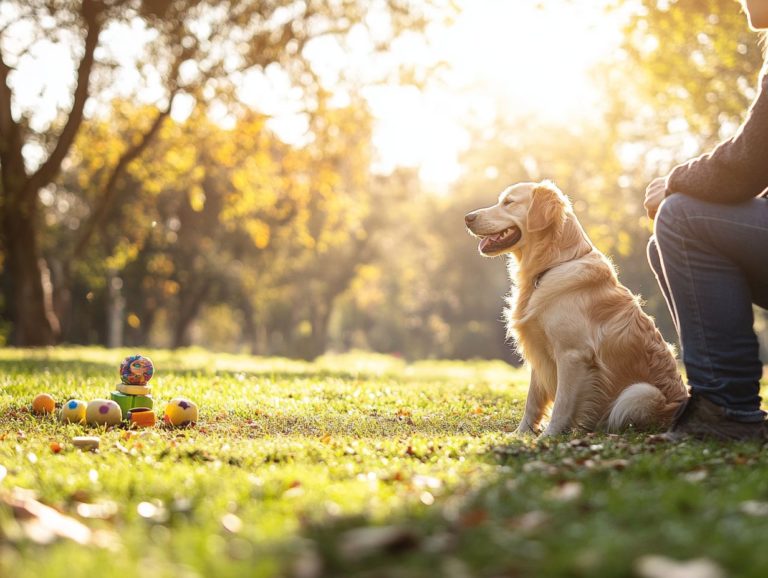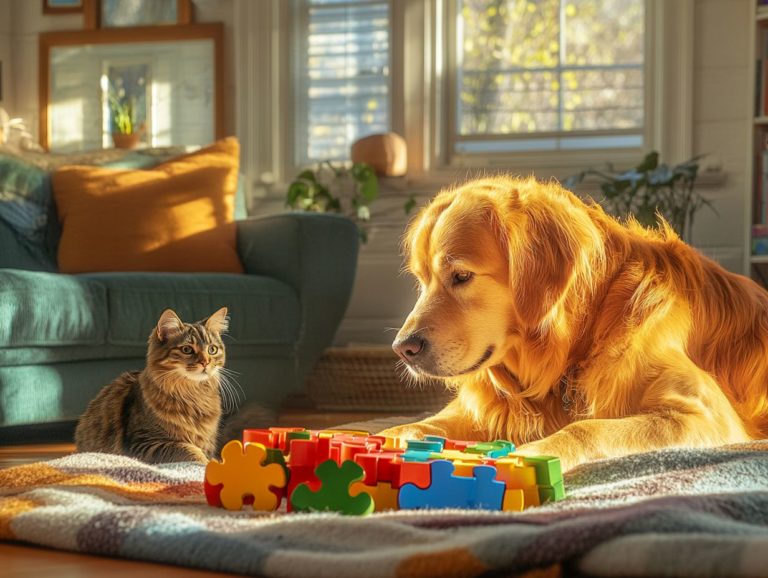5 Myths About Training Anxious Pets Debunked
Many pet owners find themselves grappling with the challenges of an anxious companion, often feeling overwhelmed by well-meaning yet misguided advice. Get ready to uncover and debunk five common myths that block your path to helping your furry friend thrive!
Misconceptions surrounding the training of anxious pets can spiral into frustration, leading to ineffective solutions. From the belief that anxious pets are beyond training to the notion that punishment yields results, we delve into the truths behind these myths and offer practical tips for fostering a calmer, more confident pet.
Contents
- Key Takeaways:
- 1. Myth #1: You Can’t Train an Anxious Pet
- 2. Myth #2: Punishment Is the Best Way to Train an Anxious Pet
- 3. Myth #3: Medication Is the Only Solution for Anxious Pets
- 4. Myth #4: Anxious Pets Can’t Be Trained to Do Tricks or Behaviors
- 5. Myth #5: Anxious Pets Are Always Aggressive
- What Causes Anxiety in Pets?
- Frequently Asked Questions
- What are some common myths about training anxious pets?
- Is it true that training can make anxiety worse in pets?
- Are all anxious pets untrainable?
- Is medication the only solution for training anxious pets?
- Is punishment an effective training method for anxious pets?
- Do all pets respond to the same training techniques?
Key Takeaways:
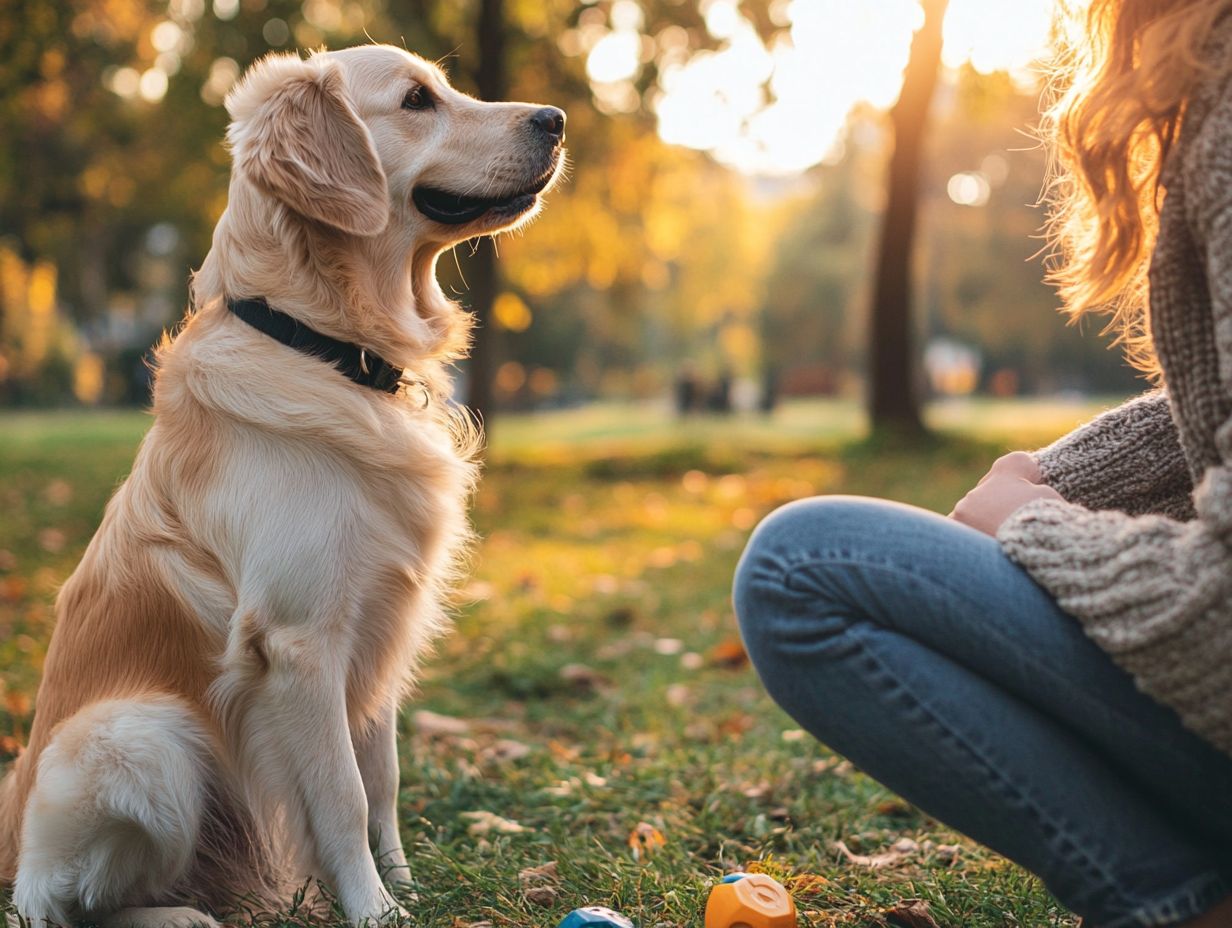
- Anxious pets can be trained with patience, positivity, and understanding.
- Punishment can create more anxiety in pets and should be avoided.
- Medication is not always necessary for training anxious pets and should be used as a last resort.
1. Myth #1: You Can’t Train an Anxious Pet
One of the most common misconceptions in dog training is the belief that anxious pets cannot be trained effectively. This misunderstanding undermines the immense potential for successful training through reward-based methods and a deeper understanding of dog behavior, including using essential training tools for anxious pets.
It can discourage you from pursuing effective training solutions that address behavioral issues while fostering a strong bond rooted in trust and respect between you and your dog.
Training early is vital. Introducing puppies to various experiences during their formative months can significantly reduce anxiety in the future.
By understanding your dog’s natural instincts and behaviors, you can craft tailored training plans that resonate with their unique temperament. This knowledge enables you to dispel the myth that anxiety is insurmountable, paving the way for you to effectively support your pet’s emotional well-being.
2. Myth #2: Punishment Is the Best Way to Train an Anxious Pet
Many pet owners often fall into the trap of thinking that punishment is the key to training an anxious pet, but this approach typically only intensifies behavioral issues instead of resolving them.
You ll find that reward-based training methods are far more effective at fostering a trusting relationship and improving communication between you and your dog.
Punishment can significantly raise anxiety levels in pets, leading them to become fearful or even aggressive in response to perceived threats. This heightened stress can create a vicious cycle, where your pet acts out more frequently due to confusion about what you expect from them.
In contrast, positive reinforcement emphasizes rewarding desired behaviors, which cultivates a more relaxed environment. When pets feel secure, they are more inclined to exhibit consistent, desirable behaviors, making the training process smoother and more enjoyable for both of you.
Choose kindness over fear to tap into your pet’s natural desire to please, nurturing a bond that encourages both learning and growth.
3. Myth #3: Medication Is the Only Solution for Anxious Pets
While medication can certainly help manage anxiety in some pets, it’s a common misconception that it’s the only solution for anxious dogs. Gaining a comprehensive understanding of dog behavior and employing effective training techniques, particularly reward-based training, can often lead to significant improvements in a dog’s emotional well-being without solely depending on medication.
By adopting a balanced approach that combines behavioral interventions with professional veterinary guidance, you can create a supportive environment that tackles the root causes of anxiety.
These training techniques not only cultivate better behavior but also strengthen the bond between you and your pet, paving the way for a more relaxed and confident canine companion.
Over time, successful behavioral modification can lessen the need for medication, enabling you to address anxiety challenges in a holistic manner and ensuring a more fulfilling life for your four-legged friend.
Start your training journey today and watch your anxious pet blossom into a confident companion!
4. Myth #4: Anxious Pets Can’t Be Trained to Do Tricks or Behaviors
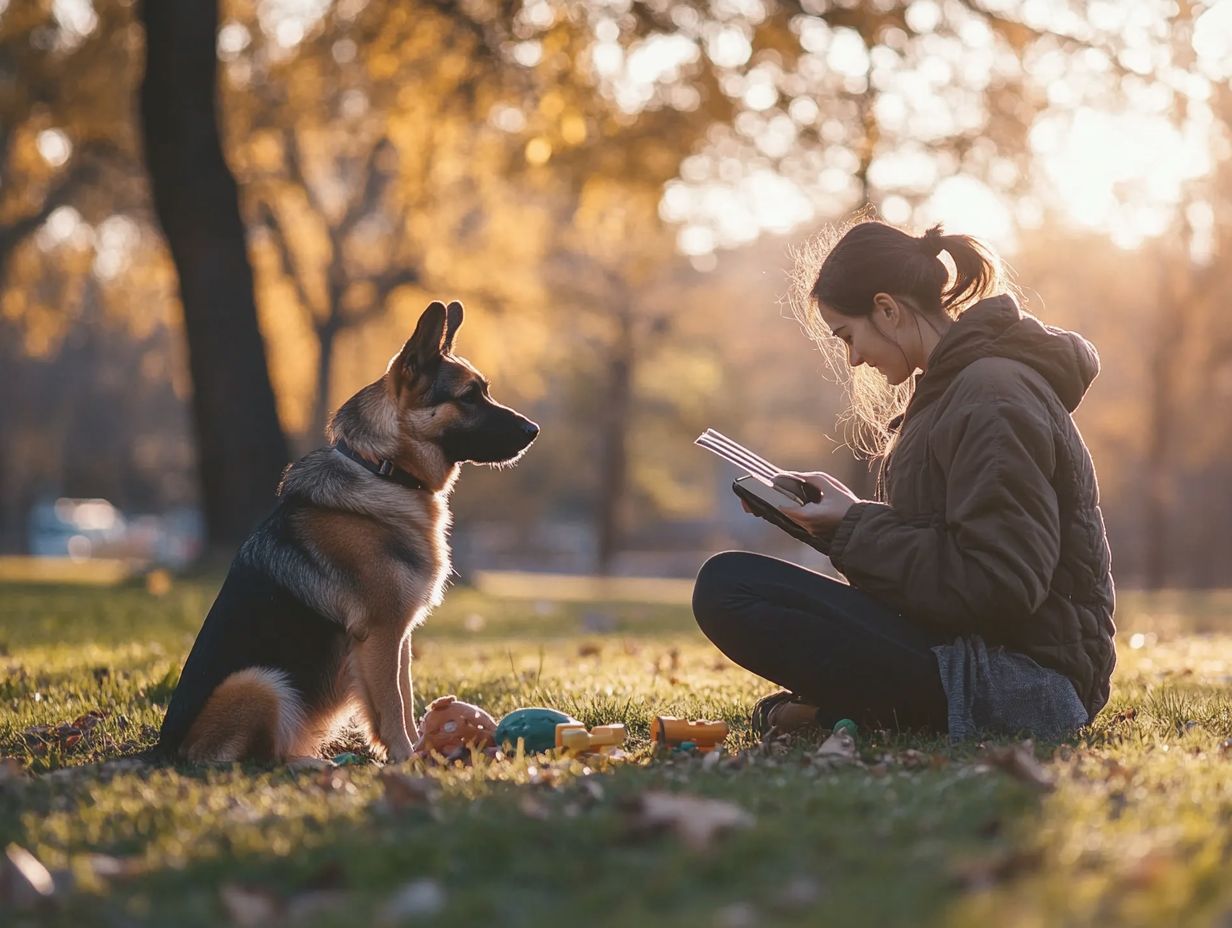
Many owners mistakenly believe that anxious pets can’t learn tricks, but with the right techniques, they can thrive just like any other dog. With a suitable training journey and effective techniques including early socialization and positive reinforcement your anxious pet can learn and thrive.
Take, for instance, a shy dog who may initially hesitate to approach new people or situations. With consistent exposure to positive experiences, like treats or praise during social interactions, your furry friend can gradually build confidence. Techniques like clicker training become invaluable, reinforcing desired behaviors and teaching tricks like sit or shake as your pet begins to associate these commands with rewards.
Early socialization enhances your dog’s adaptability and boosts cognitive skills, laying a solid foundation for further learning. This proactive approach can turn nervous behaviors into fun learning experiences, enriching both your pet s life and your shared time together.
5. Myth #5: Anxious Pets Are Always Aggressive
It s a damaging misconception that anxious pets are inherently aggressive, leading to misunderstandings of their behavior. This often results in unfair treatment from both owners and the public. By understanding dog behavior and applying effective aggression management techniques, you can address the emotional needs of anxious pets without hastily labeling them as aggressive.
Anxiety can manifest in various forms, from excessive barking or pacing to withdrawal and even destructive habits. All of these can be misinterpreted as signs of aggression, but they are typically rooted in fear or stress rather than an intent to harm.
By employing suitable training methods like positive reinforcement and gradual desensitization—the process of gradually getting used to something that causes fear—you can help alleviate these anxiety-driven behaviors. Understanding the benefits of professional training for anxious pets highlights how these techniques build trust and a sense of security, enabling anxious pets to express themselves without resorting to fearful actions.
Understanding that anxiety creates social challenges is crucial. With the right guidance, anxious pets can thrive and coexist harmoniously in their environments.
What Causes Anxiety in Pets?
Anxiety in pets can arise from various sources, such as insufficient early socialization, environmental stressors, shifts in routine, and unmet emotional needs. Understanding dog behavior is essential for effective training. By identifying the triggers in your pet’s environment, you can significantly enhance their behavioral issues, leading to a more harmonious experience as a pet owner.
Environmental factors like loud noises, unfamiliar settings, and the presence of other animals can heighten anxiety in dogs. For example, a sudden household change, such as a new baby or relocating to a different city, can leave your canine feeling unsettled and insecure.
To tackle these concerns effectively, employing targeted training techniques, such as techniques for building confidence in anxious dogs, can be a game changer in alleviating anxiety. Utilizing positive reinforcement, gradual desensitization, and establishing a consistent routine can create a sense of security for your pets, allowing them to thrive emotionally and behaviorally.
By recognizing and addressing these anxiety-inducing factors, you can cultivate a more balanced and empathetic relationship with your furry companions, ultimately enhancing their dog health.
How Can Training Help with Anxious Pets?
Training can serve as a powerful ally in helping anxious pets navigate their fears and behavioral challenges. By providing structure, stability, and positive reinforcement, you foster trust and understanding between you and your pet. Additionally, exploring techniques for calming anxious pets can further enhance your efforts.
When you employ effective training techniques, you create a supportive environment that addresses the unique needs of your anxious dog. One highly effective method is using positive reinforcement strategies to reward calm behavior with treats or praise.
During walks, carry treats and offer them whenever your dog remains composed in potentially triggering situations, like passing a noisy vehicle or encountering other dogs.
Desensitization exercises, or getting your dog used to new people or settings from a distance, can also be beneficial. This approach helps build confidence and reduce anxiety. Incorporating playful interactions, such as tossing a favorite toy, creates joyful associations, making the world seem a little less intimidating.
With consistency and patience, these approaches not only enhance your dog s behavior but also deepen the bond between you two.
What Are Some Effective Training Techniques for Anxious Pets?
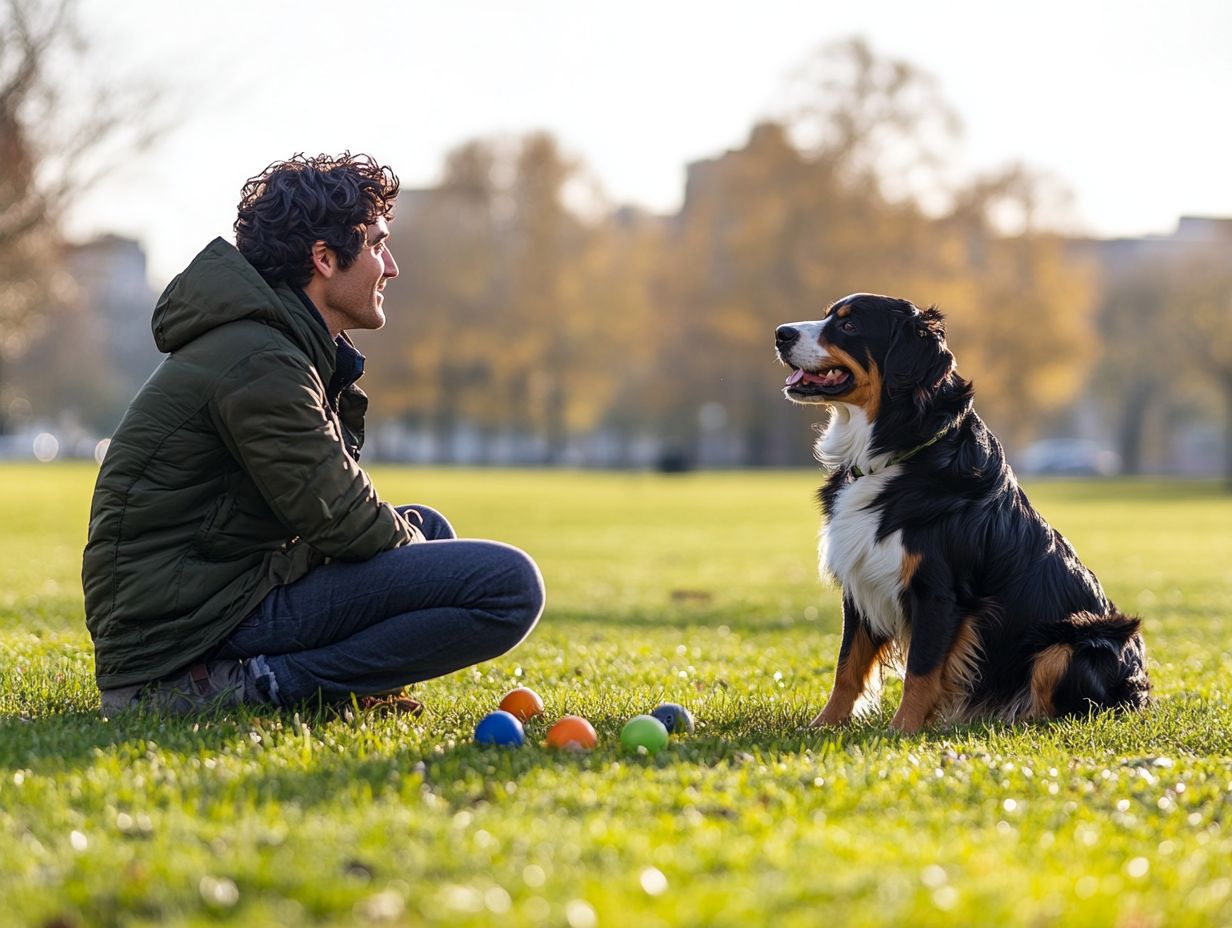
Effective training techniques for anxious pets often hinge on positive reinforcement strategies that reward the behaviors you want while minimizing stress and fear. Understanding canine behavior allows you to implement tailored methods that tackle specific challenges, ultimately paving the way for training success.
One powerful approach is desensitization, where you gradually expose your pet to anxiety-inducing stimuli in a controlled manner. For example, if your dog is afraid of loud noises, start by playing a faint sound while offering treats, slowly increasing the volume as your pet becomes more comfortable.
Counter-conditioning means changing a pet’s fear into a positive feeling by pairing the fear with something they love, like their favorite toys or treats. These techniques help create a nurturing environment, fostering trust and resilience in your anxious companions.
How Can Owners Create a Safe and Calming Environment for Anxious Pets?
Is your pet anxious? Here s how you can make them feel at home! Creating a safe and calming environment is essential in helping them feel secure and supported. This enhances their training process and overall emotional well-being.
One effective strategy is to establish designated safe spaces where your pets can retreat when they feel overwhelmed. This could be a cozy corner adorned with their favorite bedding or a crate they associate with positive experiences.
Maintaining a consistent routine allows your pets to anticipate what comes next, effectively reducing anxiety linked to unpredictability.
You can help your pet relax by introducing sensory enrichment, like soothing music or interesting toys with different textures.
These thoughtful adjustments not only enhance the emotional stability of anxious pets but can significantly improve their behavior and response to training, leading to a more cooperative and responsive companion.
What Are Some Common Misconceptions About Anxious Pets?
Common misconceptions about anxious pets can lead to misunderstandings that hinder their progress in training and overall well-being. By debunking these myths about pet anxiety, you can better cater to the emotional needs of your anxious animals and foster a healthier human-animal bond.
For example, a prevalent myth is that anxious pets are simply being ‘spoiled’ or ‘bad’ when they display fearful behaviors. This misconception can lead to frustration and punitive measures that worsen their anxiety instead of alleviating it. Utilizing tips for training anxious pets at home can help address these behaviors more effectively.
Many believe that ignoring an anxious pet will help them overcome their fears; however, this approach often results in further isolation and insecurity. By addressing these misconceptions and adapting training methods for anxious pets, you can create a supportive environment that encourages positive behavior and effective coping strategies.
Start applying these techniques today to see positive changes in your anxious pet!
How Can Owners Support and Help Their Anxious Pets?
Supporting and helping anxious pets requires a variety of methods that include understanding their emotional needs, implementing effective training techniques, and providing consistent positive reinforcement. By prioritizing their well-being, you can cultivate a trust-filled relationship that leads to successful training and improved behavior.
Recognizing signs of anxiety is crucial for your pet’s happiness. Signs include excessive barking, hiding, or destructive behaviors, all of which indicate distress. Creating a safe environment with a routine, comfort items, and a quiet space can significantly ease your pet s anxiety. Training should focus on teaching your pets how to feel secure in various situations.
Employing methods such as desensitization or counter-conditioning which means changing a pet’s negative reaction to a positive one can help them gradually acclimate to their triggers. Maintaining a calm demeanor during stressful moments reassures your pets and demonstrates the crucial role you play in fostering a sense of stability and safety.
Frequently Asked Questions
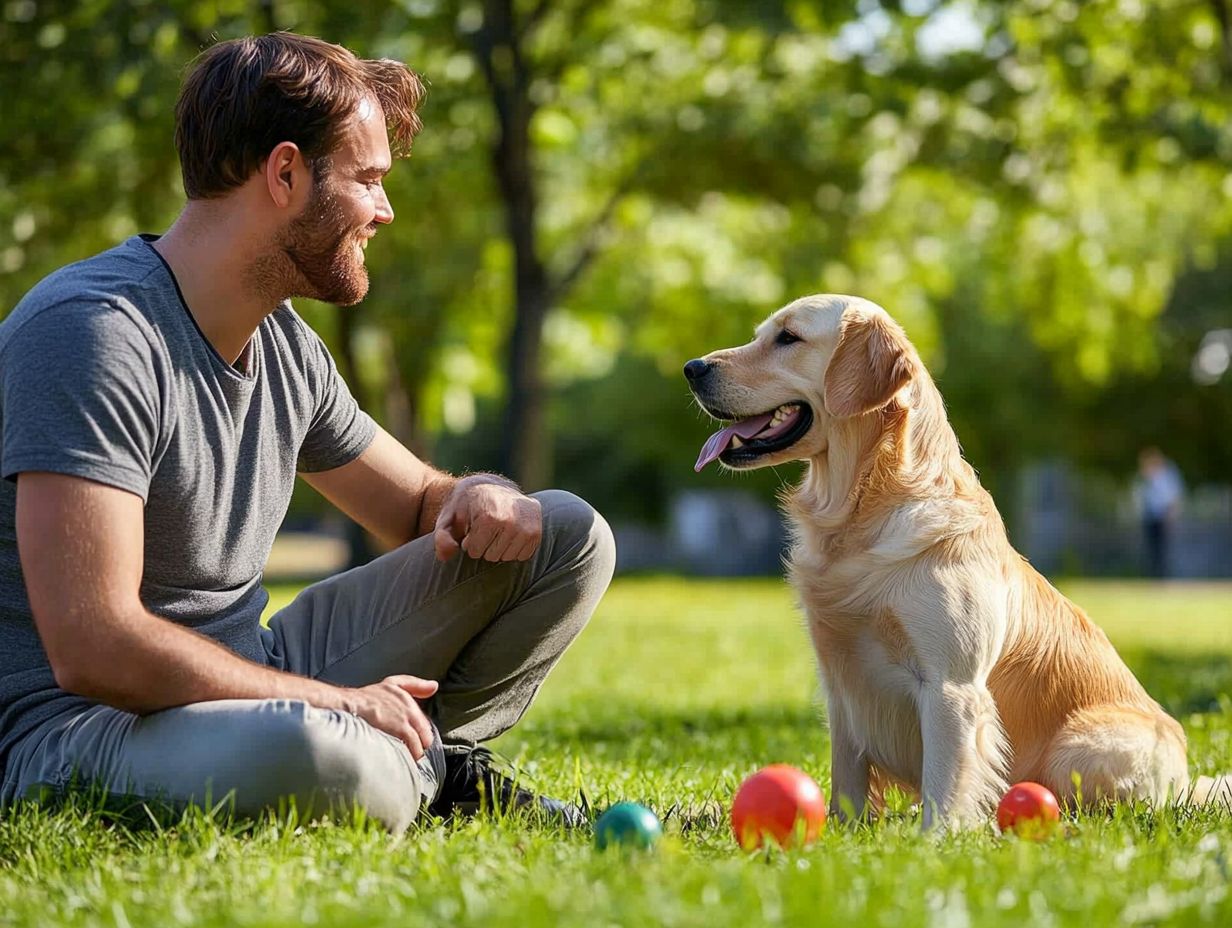
What are some common myths about training anxious pets?
- Training can make anxiety worse.
- Anxious pets are untrainable.
- Medication is the only solution.
- Punishment is an effective training method.
- All pets respond to the same training techniques.
Is it true that training can make anxiety worse in pets?
No, this is a common myth. Properly training an anxious pet can actually help them learn coping mechanisms and decrease their anxiety, as detailed in the science behind training anxious pets.
Are all anxious pets untrainable?
No, while some may require more patience and specialized techniques, most anxious pets can still be trained with the right methods and consistency.
Is medication the only solution for training anxious pets?
No, medication can be helpful in some cases, but it is not the only solution. Behavioral training and positive reinforcement can also effectively manage anxiety.
Is punishment an effective training method for anxious pets?
No, punishment can actually worsen anxiety in pets and create additional behavioral issues. Positive reinforcement and consistency are key in training anxious pets.
Do all pets respond to the same training techniques?
No, every pet is unique and may respond differently to various training techniques. It’s important to tailor methods to fit your pet’s individual needs and personality.
Take action now to support your anxious pets!



